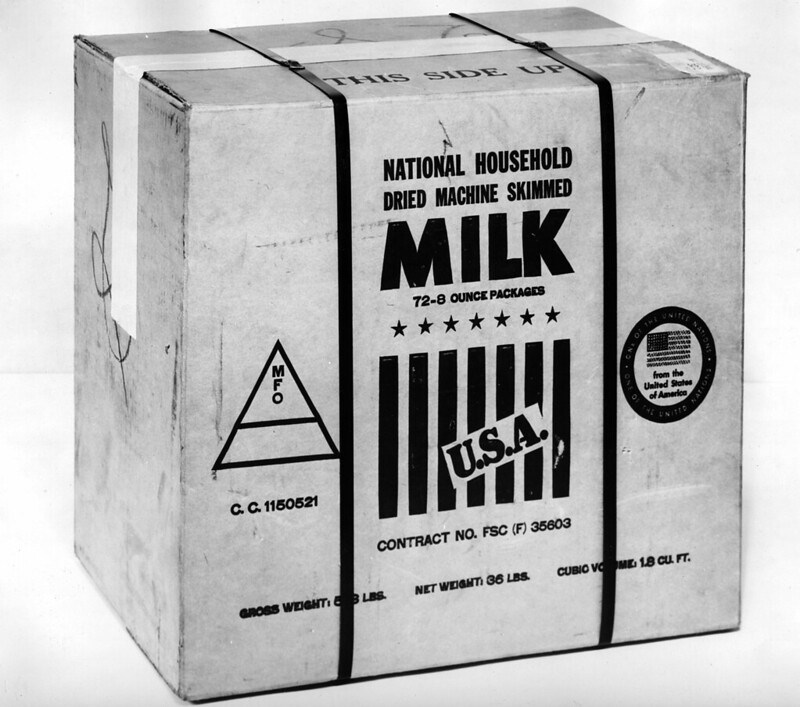Part of a series of articles titled The Watsons Go to Birmingham—1963.
Article
Chapter 6: Swedish Cremes and Welfare Cheese
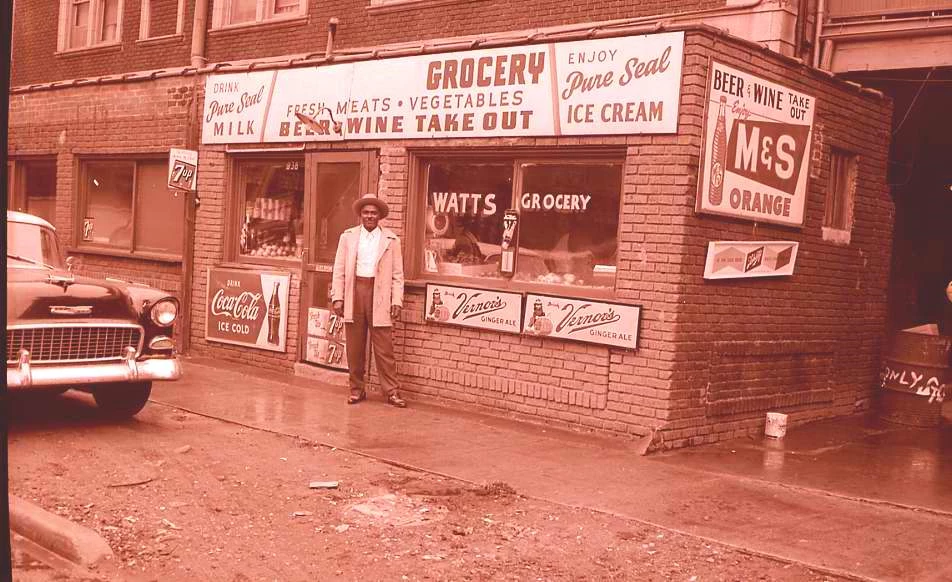
From the collections of Kettering University.
Momma sends Kenny and Byron to the corner store for milk, bread, and tomato paste for dinner. Instead of giving the kids money, she instructs them to "sign" for the food.
Byron is convinced this means they are on welfare, which makes him very upset. Momma says they aren't now, but the family has been on welfare in the past, and anyway, "food is food." Byron is still embarrassed by the idea of signing for food, so he makes Kenny talk to Mr. Mitchell (the grocer) while he wanders off to look at the comic book rack. When Kenny brings the food to the cash register, he tells Mr. Mitchell to put the groceries on the welfare list. Mr. Mitchell laughs and repeats what Momma said, that signing for the food just means that their family will pay for it all at the end of the week. As they walk home, Byron is in a good mood about getting "free food."
The next week, Kenny finds Byron in an apple tree behind Mitchell's store with a bag of Swedish Cremes. Byron shares some of the cookies, which makes Kenny suspicious. Why is he being so generous? It turns out that Byron had been secretly adding treats to the family's account at Mitchell's.
The Watson brothers notice a mourning dove on a telephone wire. Byron has already had more than enough cookies, so he throws Swedish Cremes in the direction of the bird until he finally hits it. To his horror, he kills the bird. Byron gently scoops up the dove and cradles it before he starts to vomit and cry. As Kenny tries to comfort him, Bryon punches Kenny and throws rotten apples at him. Later, Kenny returns to check on the dead bird and finds Byron has dug a small grave for it, marking the spot with a cross.
Fact Check: Was signing for groceries popular?
Was signing for groceries and paying later as popular as Momma claims?
What do we know?
Yes. Until the late 1960s, this practice was common in communities where people lived paycheck to paycheck. Although many people can access bank-issued credit cards today, all African Americans and women of any race were barred from getting a credit card until the 1974 Equal Opportunity Credit Act. Moreover, the practice of using credit cards to pay for groceries (as opposed to more expensive items such as automobiles) did not become widespread until the 1990s.
The arrangement the Watsons have with Mr. Mitchell reflects an old-fashioned credit system in which sellers trust that buyers will return to pay for signed goods. They took a risk in making sales in this way as groceries, unlike television sets or furniture, could not be "repossessed" (taken back by the store) if the customer failed to later pay for them. At the same time, prices set by small grocers were comparatively more expensive than at larger or chain stores, where customers must pay in cash at the time of purchase.
In the context of the novel, Mr. Mitchell trusted the Watson family. But the Watson family also trusted Mr. Mitchell. They had confidence that when the end of the week came, the grocer would not overcharge them, claiming they had taken food which they had not in fact signed for. Such mutual respect was not always the case, however. Customers signing for goods were always vulnerable to being overcharged. Store owners exercised considerable power, especially when grocers were white.
What is the evidence?
Primary Source: Melba Pattillo Beals, Warriors Don't Cry: A Searing Memoir of the Battle to Integrate Little Rock's Central High School (New York: Pocket Books, 1994).
Melba Pattillo Beals, who was born in Little Rock, Arkansas in 1941, relates an experience from her childhood in which she became painfully aware of racism. In the passage below, she describes a visit to the white-owned Waylan's Grocery. Her family planned to pay off their monthly grocery bill and also buy what they needed for the week ahead.
"We had Mama's teaching check, Daddy's railroad check, and the money Grandma India had earned from her work as a maid. It was one of those times when we all felt joy and peace and lots of hope [because we had more than enough money to pay what we owed]. ... Grandma was the first to look over Mr. Waylan's bill. Her forehead wrinkled; she mumbled and handed it to Daddy. He looked it over and talked to her with his eyes. By the time Mother examined the bill, all their faces were grim. They quickly moved Conrad and me with them to a corner of the store. They were certain the bill overcharged them by twenty-two dollars. That was more than a day's pay, Daddy said. Still, they seemed frightened to speak up. After lots of whispered angry words, they decided to complain. Although Grandma approached the grocer in a calm, respectful way, he shouted back at her in an angry voice—loud enough for everyone within a block to hear. He said he gave us credit when we didn't have eating money, so he expected us to pay without complaining. ...At first, Mother, Grandma, and Daddy stood paralyzed [frozen in place]. Then Mother took a deep breath, stepped forward, and said in a commanding voice, 'Even when we’re being overcharged?' 'You just watch your mouth or you'all will be eating beans next month.' The grocer was shaking his fist at Mother Lois. There was fire in Daddy's eyes, but once again, Grandma looked at him and he backed down; the three of them cowered like children before a chastising [scolding] parent. ...All at once Grandma started to pull dollars out of her purse and Daddy did the same. Together, they paid the full amount."
Primary Source:
"Families who buy food at small groceries may do so in part because they feel more at home with the storekeeper; but it is also true that they can get credit there which is not available at the supermarket. And the same pervasive need for credit may explain why some shop for durables [goods kept for a substantial period of time, such as furniture] only in the neighborhood. In the end, traditionalistic practices and the basic requirement for credit work in the same direction: they limit the scope of alternative places in which to buy the necessities of life."
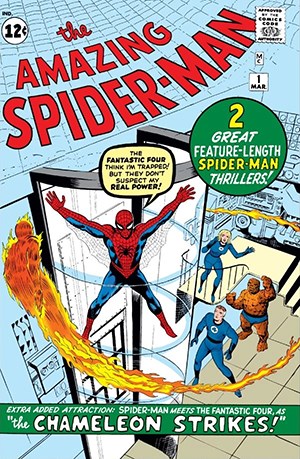
Art by: Jack Kirby, Steve Ditko, Stan Goldberg and Artie Simek. All Marvel Comics characters and the distinctive likeness(es) thereof are Trademarks & Copyright © 1941-2023 Marvel Characters, Inc. ALL RIGHTS RESERVED.
Fact Check: Did corner groceries sell comic books?
Byron goes directly to the comic book rack at Mr. Mitchell's store. Did corner groceries have comic book racks? What was on them?
What do we know?
New issues of comics arrived on grocery store racks each month, and many young readers tried to quickly read comics in the store aisle. Before independent comic book shops existed, young people shared, traded, and sold comics from their collection among friends and their peer group.
The 1960s were an exciting time in the comic book industry, and kids flocked to comics despite the growing popularity of television. DC Comics reinvented some of its earliest heroes like the Flash and Green Lantern for new audiences. Meanwhile, Marvel Comics came out with Spider-Man, the Fantastic Four, and the Hulk, sci-fi comics that proved hugely popular. These comic book titles often presented patriotic themes, responding to the Cold War by assuring readers of American leadership in the face of an international threat of Communism.
What is the evidence?
Primary Source: "The Amazing Spider-Man #1", cover, Marvel Comics, March 1963.
Introduced in the early sixties, Spider-Man quickly became one of the most successful costumed superhero serials. Fans eagerly awaited the latest Peter Parker/Spider-Man adventure, which focused on a teenager balancing his incredible abilities with real world anxieties and a home life that many readers recognized as being like their own.
Primary Source: Josette Frank, "Comics, tv, radio, movies - what do they offer children?" in Public Affairs Pamphlet, no. 148 (New York: Public Affairs Committee, 1955): 1-28.
"Today comics are Big Business. Some 300 different comics magazines are bought by over fifty million purchasers, some of them adults, many of them children between the ages of eight and eighteen. Many more read them, for children ‘swap’ or resell them as long as the pages hold together. Surveys point to the likelihood that comics are read by 98 percent of all children aged eight to twelve, from all types of homes and cultural backgrounds, rich and poor, city and country..."
Secondary Source: Dan Gearino, Comic Shop: The New Retail Mavericks Who Gave us a New Geek Culture (Athens, Ohio: Swallow Press), 2017.
"At the same time, many readers found it difficult to obtain the comics they wanted. The major publishers sold through a network of independent distributors. The distributors were entrenched businesses that had hard-earned territories of newsstands, grocery stores, and drugstores. They sold a wide array of printed material, of which comics were a small and not particularly profitable part. 'There was no way for me to get a comic if I missed it on the stands,' said Irene Vartanoff. She was part of a generation of fans who developed their own system for finding back issues, trading and selling comics through the mail with other fans."
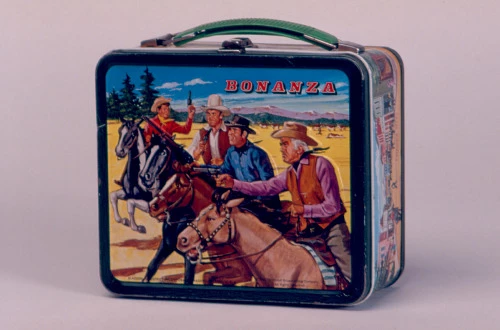
Smithsonian Institution, National Museum of American History.
Fact Check: Were westerns popular?
Byron and Kenny imitate characters from American western films, using terms like "peon," "circle the wagon," and "ready, aim, fire!" Were westerns popular in the sixties?
What do we know?
Westerns were one of the most celebrated film, television, and radio genres of the postwar period. In 1963, the westerns McLintock! and How the West Was Won, which featured Hollywood stars John Wayne and Jimmy Stewart, enjoyed great commercial success. The TV western Bonanza, which ran from 1959 to 1973, was the second-most popular television program in 1963. Stories about the frontier and "cowboys and Indians" were popular in school reading textbooks and nonfiction marketed to children. Because western-themed content was widespread, people adopted the catchphrases of the genre. Today, many recognize how westerns present offensive stereotypes of American Indians. The genre as a whole glorifies the United States' western expansion, a process that displaced Indigenous peoples from their homelands.
What is the evidence?
Primary Source: "Bonanza lunch box," 1965, Smithsonian Institution, National Museum of American History.
Primary Source:
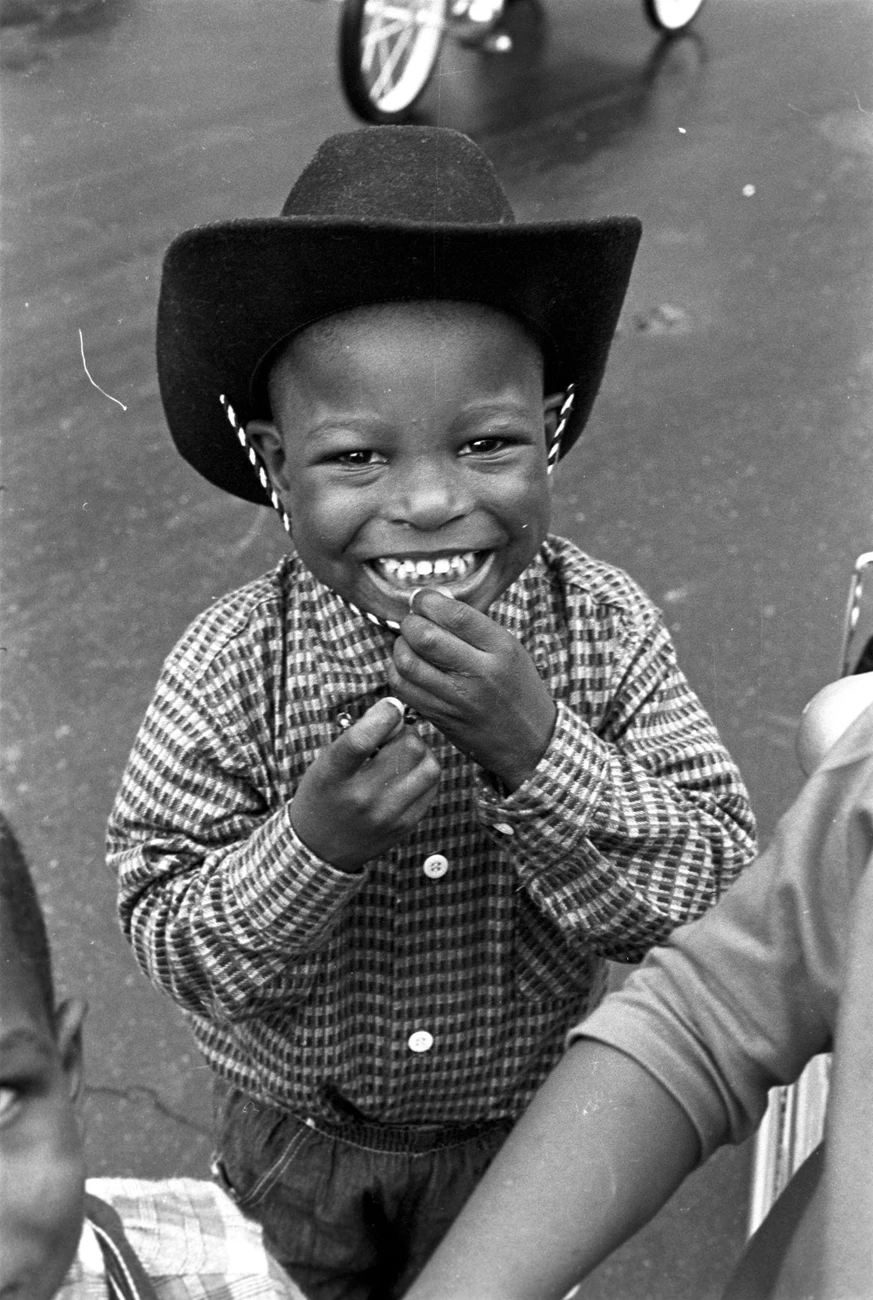
Alabama Department of Archives and History.
Primary Source: Nancy Larrick, "Stop underestimating our children!," Junior Libraries 6, no. 2 (New York: 1959).
"To the amazement of TV producers, so-called kiddie shows don’t attract the kiddies. Instead, children turn more and more to adult programs leaving the puppets, cooing storytellers, and wide-eyed listeners to enjoy each other, without audience or sponsor. ...The old Westerns, now repeated on television, hold children spellbound. Like their parents, they prefer the rugged, sometimes bloodcurdling excitement of these films to the more leisurely pace of educational programs."

Voices from the Field
"Credit At Grocery Stores" by Louis R. Hyman, a professor of Labor Relations, Law, and History and Director of the Institute for Workplace Studies at Cornell University. Hyman is the author of Debtor Nation: The History of America in Red Ink.
Writing Prompts
Informative/explanatory
Byron enjoys browsing the comic books placed near the grocery store checkout counter. What items are displayed near cash registers at the stores where you shop most frequently? Develop the topic with facts, definitions, concrete details, quotations, or other information and examples related to the topic.
Opinion (relating to topic above)
The Watson family shops for groceries at a corner grocery. What are some of the advantages and disadvantages to shopping at small, local stores versus large big box stores versus online? Provide reasons for your opinion that are supported by facts and details. Link your opinion and reasons using words, phrases, and clauses (e.g., consequently, specifically).
Narrative
The school has budgeted $50.00 to prepare a school lunch for a class of 30. Look at a current grocery ad to determine what you can buy so that you do not go over budget (but can still prepare a healthy and appetizing meal). Use concrete facts, words, and phrases and sensory details to describe your plan precisely.
Note: Wording in italics is from the Common Core Writing Standards, Grade 5. Sometimes paraphrased.
Last updated: December 29, 2023

